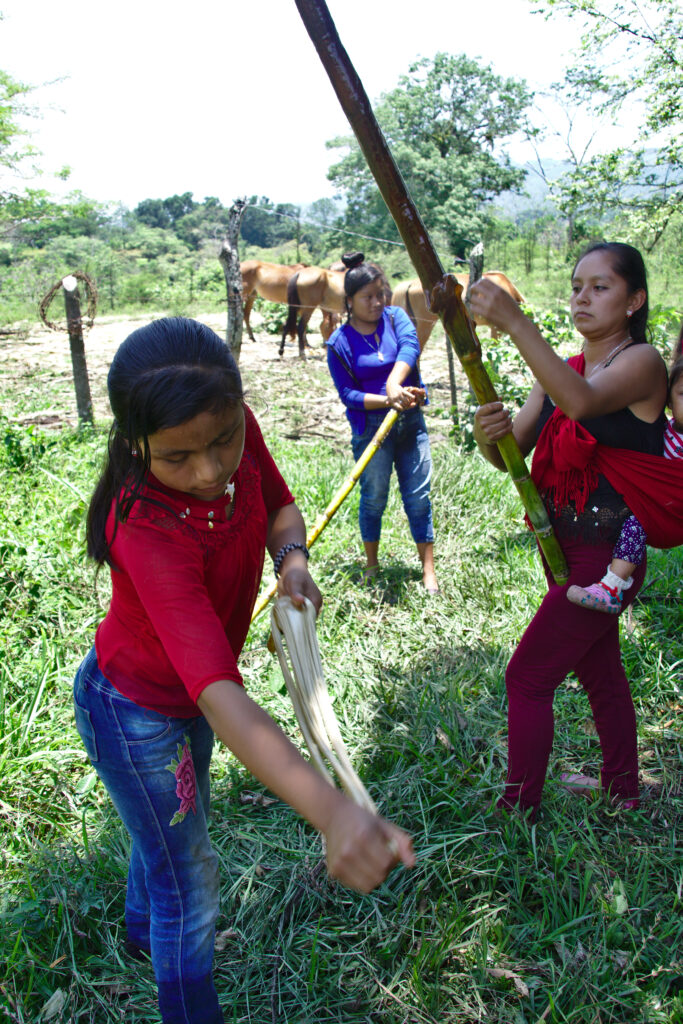
I’m leaving now. Gabriela says, leaving in the darkness of the early morning. Her contribution to the family today was to light the stove at 2 a.m. and make tortillas for her father and brothers to have breakfast before going out to the fields to grind sugar cane.
She returns to the little wooden house divided in 4 with the curtains that move with the breeze that the door makes; in the first room sleeps her parents, in another the 3 brothers who are not yet married, in the third Gabi with her two little sisters and in the last one the daily work is stored – the panela (sugar cane). She grabs her backpack, carefully prepared the night before. She takes the muddy road without saying good-bye. Though it is night, the weather is cool but not cold, the earth still damp from the night’s rose, the clear sky illuminating her way to the health clinic. The neighbors waking up at their own pace, men’s voices looking for their machete or rubber boots, women’s laughter preparing pozol or the previous day’s reheated food. Here the world dawns many hours earlier than in the communities that live in colder areas. Here the night cannot be lost, the day is what hurts the body and the afternoons are for political work.
Gabriela smiles as she approaches the clinic’s meeting room, she can hear the voices of her comrades counting the number of vaccines they have in the rows as they go over the types of vaccines, and the dosage for each age. The next two days they will be vaccinating children and the elderly in 42 communities. It is important to be prepared not only in terms of supplies to bring, and materials that may be required because there will be people who need medical consultation, but also to bring water and saline solution, because there are always children dehydrated due to poor water and nutrition. Gabi consults with another colleague – a midwife – to see if it would be appropriate to bring a fetoscope. They smile proudly that they finally have one. While the health promoters load the materials and their backpacks into the pick-up truck (whose adventure with the movement began with the organizing of the bases and traveling the dirt roads of the jungle in all the municipalities of Chiapas) Gabi takes the opportunity to water the garden of medicinal plants that they use to treat illnesses.
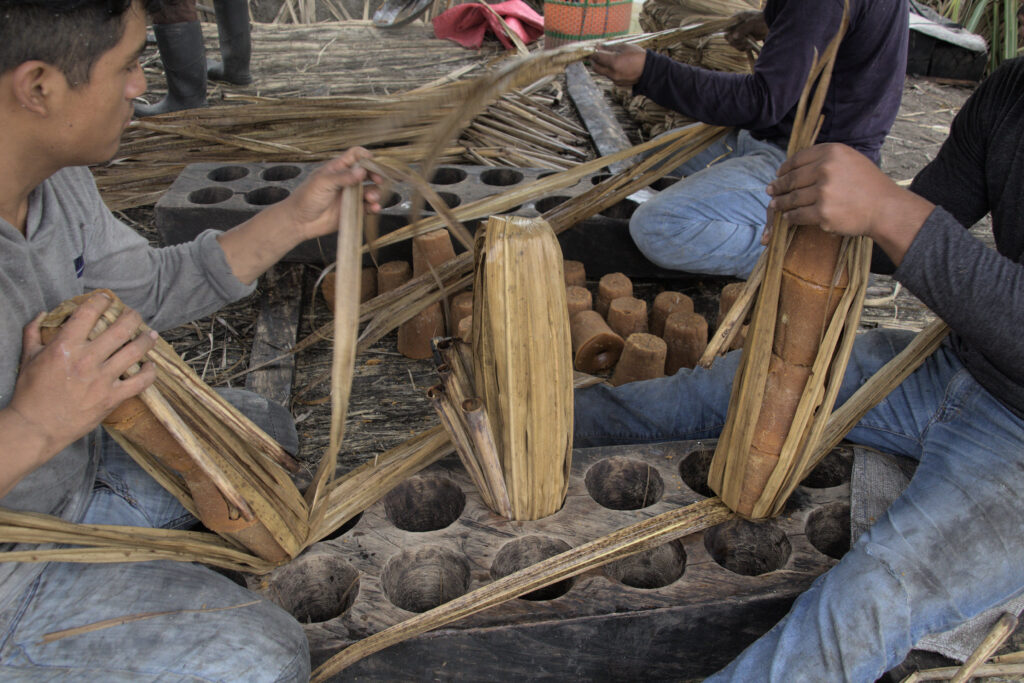
There are only two seats in the cab of the truck, they are for the compañero who donated it to the struggle 20 years ago, and next to him, Anita with her little daughter. The night wind caresses the sunburned faces of the countryside. Gabi has known these roads since she decided to become a health promoter at the age of 16. There was no doubt that it was what she wanted to do. Her father, an insurgent who organized the mountain villages of the highlands, taught her determination and dedication to community service. Her mother, a young woman raising her children with the vision of advancing the struggle from home. It was never easy –walking in the dark of night to participate in meetings and assemblies, women’s collective work, taking care of the 11 children, the milpa, the animals, collecting plants in the forest for food, and to make medicinal infusions. Her partner working on organizing, social analysis, educating on the history of the peoples and the struggle against power. She was teaching women and their children about discrimination against women, against indigenous people, against poverty. Gabi had no choice but to choose the path of her parents. She knew the world needed change and change could only be achieved by giving her whole self to it. She was just finishing Zapatista elementary school, she knew that history is written by the colonizers, by those who stole the land from their ancestors, by those who raped women for pleasure or to populate the region with descendants in order to control entire communities, and destroy her culture.
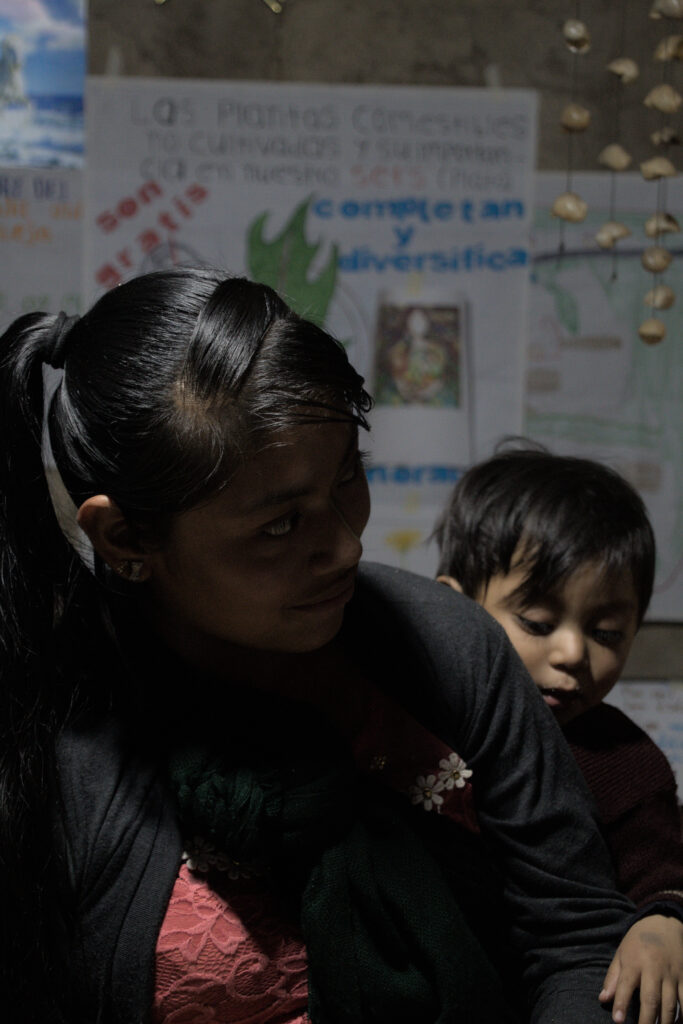
A small light begins to appear on the horizon of the road. It is the first house of the community to be be vaccinated. They decide to park the truck next to a wooden house, where you can smell the fire at a distance. “We are already hungry and we haven’t even started,” says one of the promoters. The little house is full of smoke, two women preparing tortillas. “Coffee? You must be cold?” they say. Some sit at a small wooden table worn down by smoke and grease. Others on inverted plastic buckets.
While Gabriela prepares the vaccines, others drink coffee in a hurry, there is no time for conversation. A good greeting and a hug, an exchange of glances is enough to know that there is affection, gratitude and the path to do what needs to be done. On the low stool in the corner of the kitchen a woman in traditional Carranza dress hugs a child. The little boy is 9 months old, this is the second time he has been vaccinated.
“Well, it’s a good thing you came so early -she says- so we have time to take care of the animals and go to the meeting. Representatives from the women’s textile collectives in other regions are coming to see how the different groups can collaborate. If we work together, even though our products are different and sometimes we even speak different languages – she laughs – our unity makes us stronger, more visible, exposing a variety of the products we make. It’s funny sometimes, but because the compañeras have different experiences, it helps a lot in our analysis of how we are doing, and how we want to work.” As she says goodbye to the others, the promoters ask about feminine health issues, offering to come back to attend her. “Oh well, there are things that one doesn’t always want to share. But if you come back next time, I’ll let other compañeras know, there may be some that have some problems.”
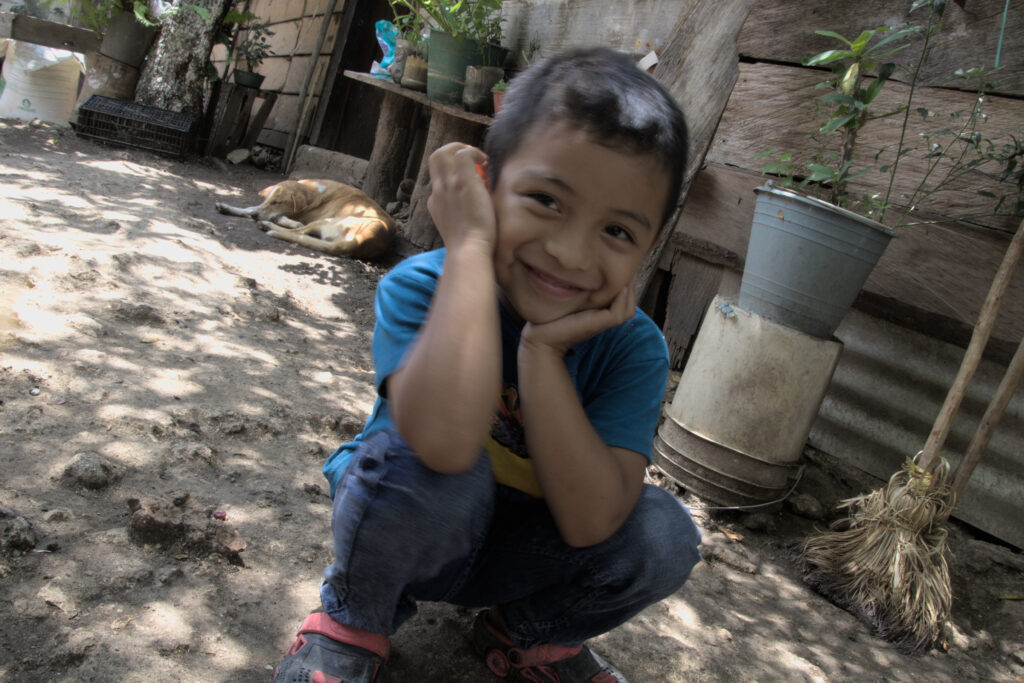
The promoters look at the list of houses to visit. They divide into groups of two to be more efficient in this dawn that is still night. Each house, each family, each smile is a different story and yet similar at the same time. They were here two months ago, as is the vaccination strategy. There is no other way to attend patients given the limitations of access to the vaccines, difficulties with transportation, as well as continuous threats from the government or paramilitary groups that do not allow for continuous or immediate health action as needed.
In two months the dynamics within the communities can change. There are stories, there are thoughts, there are children growing up observing the world and the threats against it, and at the same time growing stronger in this journey that is already well underway. We get into the van, the horizon is getting clearer, the first rays of sunlight illuminating the black dirt road. The second village waiting to welcome us ….
We invite you to accompany us in this journey of daily resistance, struggle and determination…
This portrait is one among many of courage, determination, creativity and love that persevere in the autonomous Zapatista territories today. While unique, Gabriela’s is also that of every woman. In the face of mounting paramilitary violence, militarization, violence against women and ecological devastation at the hands of megaprojects and global climate change, her resistance is in the name of life and dignity on the planet, of improving the quality of life for her children and/or those in her community, of seeing the perpetuity of clean water, air, and soils which will nurture diversity for generations to come. Her vision does not end with her life. So she keeps building.
Compañerxs, over the course of this past year, while still in the midst of the pandemic, we have witnessed assassinations of defenders of human rights and territory, the murders of journalists and social and environmental activists, thousands of indigenous people displaced from their homes, and the complicity of government in organized crime at the highest levels. Zapatista communities have their lives and livelihoods threatened, and are increasingly under siege. In September of last year (2021), our Zapatista compañerxs warned that Chiapas was on the brink of civil war, as communities organize to defend themselves from the scourge of narco violence. The women and children and men in resistance have seen this coming for some time.
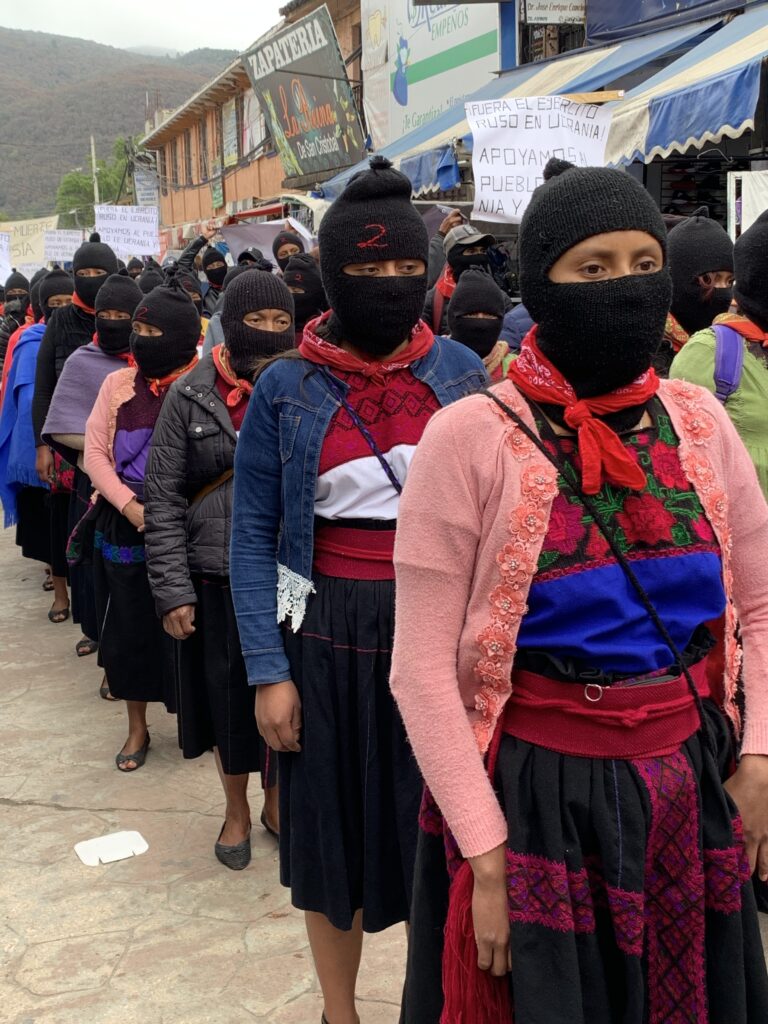
This spate of violence, displacement and disruption, and even the rise in organized crime and its links to government have been foreseeable as the culmination of the neoliberal project —a great homogenization that would see indigenous and campesino communities reduced to a poorly paid workforce in mining, logging, tourism, etc. Though the reform of Article 27 of the Mexican Constitution and NAFTA dealt huge blows to communally-held land and markets in other regions, the more totalizing project of extraction and exploitation of the Mexican southeast came under the Plan-Puebla-Panama (a massive infrastructure and development proposal) under the administration of Vincente Fox. Despite the appearance that the PPP had died in a firestorm of international opposition, many of the projects proceeded apace, and the project of widespread territorial dispossession conveniently merged with organized crime and the ongoing campaign of counterinsurgency waged by all levels of government. The Mesoamerica Project, as it was renamed, would find new language, and new sponsors.
The Zapatista compañeros warned of these developments before President López Obrador (AMLO) took office — that the most effective overseer of the “plantation,” the one who would be most skillful at presiding over dispossession and environmental devastation, would be the one who carried the banner of combating corruption, of bringing opportunity to the rural, impoverished areas, of being “not the same” as the rest. In fact the statistics are stunning. The extent to which impunity under AMLO is continuous with the previous administrations, the flagrant overreach of executive power, the alarming militarization of public projects, and the calculated community destruction through projects and programs are all contradictory to the discourse of the AMLO administration.
And yet to this day, in spite of a constant siege, the Zapatista communities continue on the path of non-violence, creativity and construction of their autonomy — resisting and organizing against all odds in order to defend life in the broadest sense. Last year, they embarked on an audacious listening tour to the Europes of Below, overcoming institutionalized racism, international bureaucracy, and discriminatory pandemic protocols to hear stories from sisters and brothers on another continent. On March 13th, on the occasion of the Russian invasion of Ukraine, thousands of BAEZLN (Zapatista bases of Support) turned out in the streets of several Chiapas municipalities to call for an end to all capitalist wars. Their struggle is not for themselves, it is for all of us, for all of the peoples and languages and territories that we depend on to be able to survive.
Compañerxs, we continue beside the autonomous communities in this struggle, a struggle that is all of ours to take up, across borders and in our own communities. Opportunities to learn from one another are unique and rich. We look forward to how and where our pathways may converge, to sowing our resistances collectively. Please stay tuned, follow our blog, and continue building …
